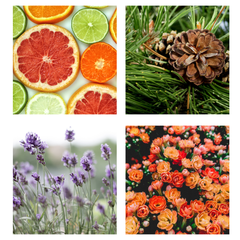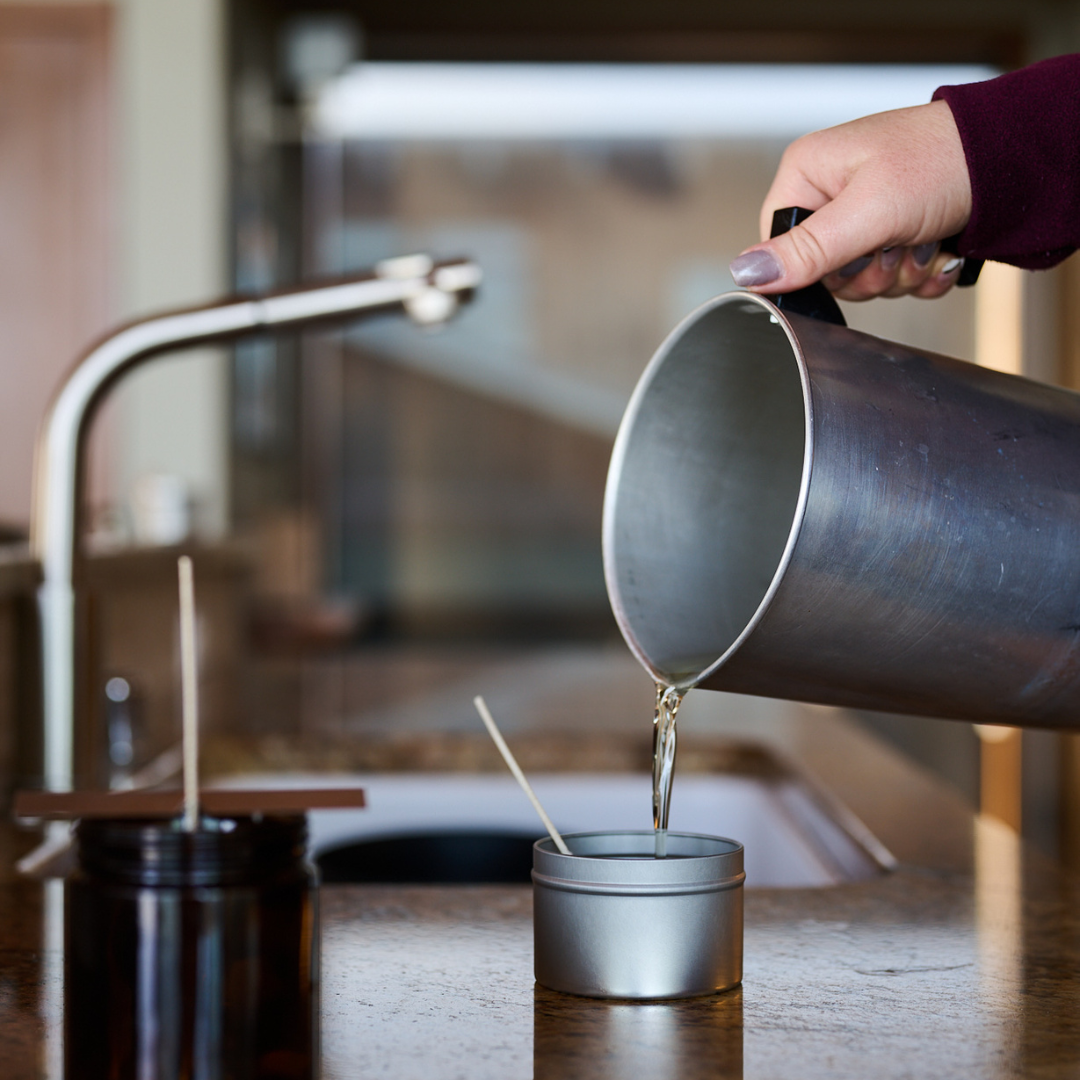How to Make a Scented Candle
Whether you're crafting for fun or dreaming of your own candle line, making a scented candle from scratch is a rewarding process. At Elm Design Candles, every detail matters—from the wax we melt to the fragrances we choose, especially when crafting non-toxic candles inspired by the natural beauty of the PNW and Whidbey Island.
Here’s a step-by-step guide to making your own high-quality, long burning candles at home. And when you're done? Be sure to check out our guides on candle care and candle safety to make the most of your creation.
Pick Your Wax
Choosing the right wax is the first step to creating the best candles for your space or business.
Wax Options
Soy Wax
Soy candles are made from vegetable wax derived from soybean oil—grown predominantly in the U.S. This makes soy wax a renewable, eco-friendly, American-grown, and carbon-neutral option.
At Elm Design, we work exclusively with soy wax because it's easy to handle, holds fragrance beautifully, and produces clean, long burning candles.

Paraffin Wax
A petroleum byproduct, paraffin is not a renewable resource and can negatively impact the environment.
Beeswax
Produced by honeybees, beeswax is natural and clean-burning, but can be costly and carry a strong scent that may overpower delicate fragrances.

Wax Blends
Coconut, apricot, soy, and other blends are becoming increasingly popular for their unique properties and performance balance.
Want to know more about what’s actually in a candle? We’ve busted a few common myths over on the blog.
Pick Your Container
When selecting your vessel, prioritize safety and functionality. Look for non-porous, heat-resistant, and non-flammable containers such as glass, ceramic, or metal.
We use amber glass jars and metal tins—each tested rigorously with our soy wax and fragrances to ensure a safe, even burn.

Want to brush up on the do's and don’ts of candle burning? Our candle safety tips post has you covered.
Pick Your Fragrance
The soul of a scented candle lies in its fragrance.
Fragrance Oils
Fragrance oils blend essential oils with synthetics to create complex scents. We use only CleanScents® by CandleScience, which are free from harmful substances such as carcinogens and phthalates. These oils align with our mission to create non-toxic candles that are both safe and beautiful.
Essential Oils
Extracted from natural sources like flowers, leaves, and bark, essential oils are a great option for those seeking all-natural ingredients. However, we’ve found that they can be costly and may not perform as well in long burning candles.

Pick Your Wick
Wick choice plays a huge role in how your candle performs.
Always start with a high-quality, lead-free wick.
Many suppliers offer a Wick Guide to help you match wick type to your wax and container.
For example, we use a CD18 wick (flat braided cotton with paper threads) in our 6oz metal tins to ensure a clean, even burn.

Crafting Your Candle
For this tutorial, we’ll walk you through making a soy candle with fragrance oil—a perfect combo for clean, long burning candles that represent the heart of the PNW.
Materials:
Measuring tool
1 lb. of soy wax
Heat source (double boiler or hot plate)
A thermometer
Stirring utensil
1oz fragrance oil of your choice
Candle vessels (preferably a 8oz metal tin)
1 - CD18 Wick + wick sticker
Wick bar
Metal pitcher
Steps:
1. Measure 1 lb (16 oz) of soy wax into your metal pitcher. Heat to 185°F.

2. Prep your vessel: Clean thoroughly and attach the wick with a wick sticker. Center with a wick bar.
3. Add fragrance: Once wax reaches 185°F, add 1 oz of fragrance oil (roughly 7% fragrance load).

4. Stir slowly for 2 minutes to minimize air bubbles.
5. Cool wax to 130–135°F before pouring into your container.

6. Let cool completely, then trim the wick to ¼”.

Creating candles is more than just mixing wax and fragrance—it's an act of care and creativity. At Elm Design, we’ve poured our hearts into crafting clean, long burning candles that reflect the landscapes and energy of Whidbey Island. And we love helping others do the same.
Ready to level up your candle knowledge? Explore more:
Candle Care 101
How to Burn Candles Safely
Busting Candle Myths

